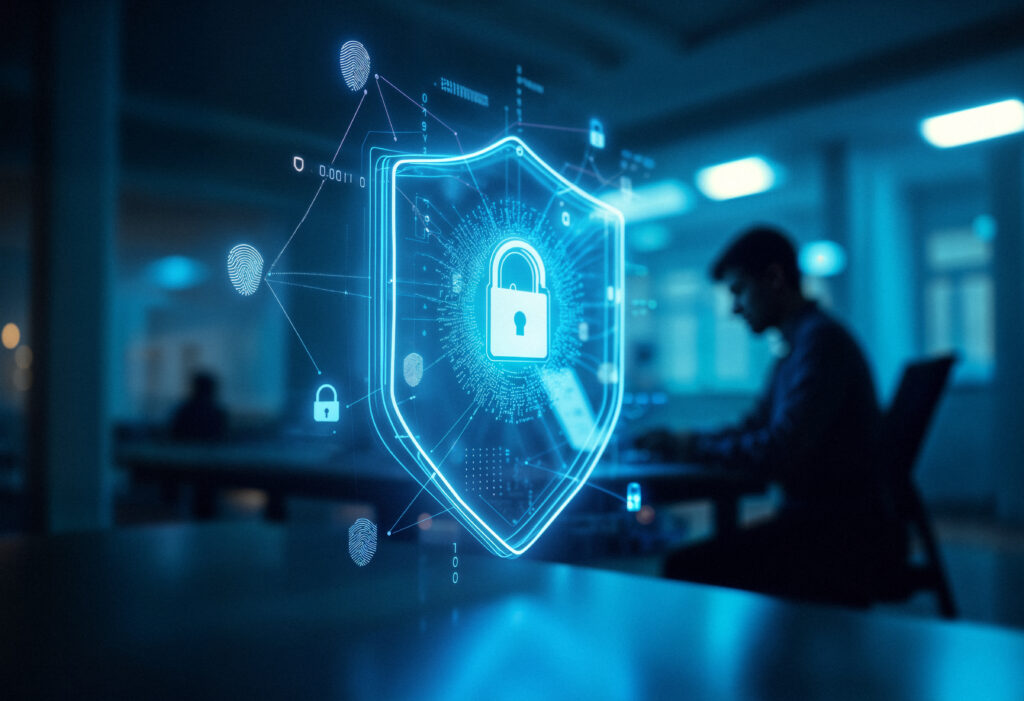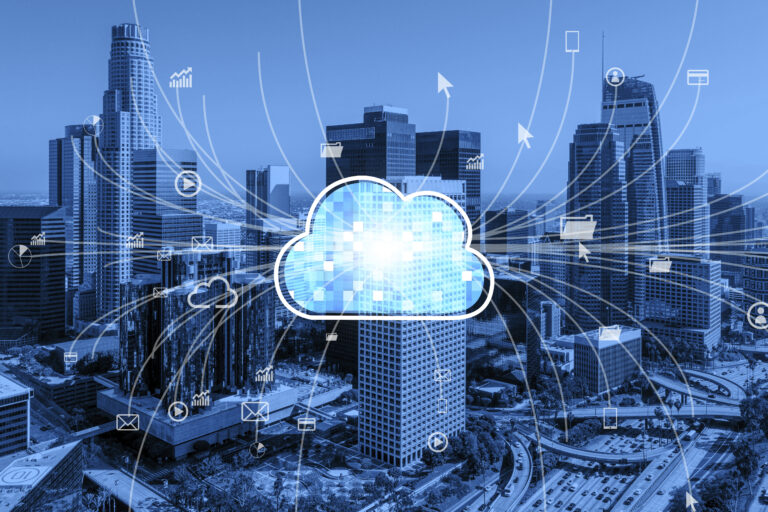Introduction
In today’s digitally connected business environment, the terms “IT security” and “cyber security” are often used interchangeably. Yet, understanding the differences between the two is vital for IT leaders, executives, and professionals who are serious about building resilient, compliant, and future-ready systems. While both focus on protecting data and systems, their scopes, strategies, and applications differ.
As the complexity of threats evolves, so too must our understanding of the frameworks that defend against them. IT security primarily deals with safeguarding data in physical and digital formats, across networks and infrastructure. In contrast, cyber security concentrates on defending systems and networks from malicious online attacks. Both are crucial, but applying the wrong strategy in the wrong context could leave critical gaps.
For decision-makers, bridging this knowledge is not just about semantics—it’s about cybersecurity for business, risk mitigation, regulatory compliance, and competitive advantage. This article breaks down the nuances between IT and cyber security, explains where they intersect, and shows why investing in a robust security strategy—including the right MSP partner—is essential for safeguarding business continuity.
What is Cyber Security?
Cyber security focuses on protecting internet-connected systems—including hardware, software, and data—from cyber threats such as malware, phishing, ransomware, and denial-of-service (DoS) attacks. It aims to secure both external-facing digital environments and internal networks from unauthorized access, misuse, or damage.
- Secures networks and digital infrastructure
- Defends against online threats and cybercrime
- Involves monitoring and incident response
- Includes firewalls, antivirus, IDS/IPS
- Extends to mobile, cloud, and IoT systems
- Supports data encryption and secure authentication
- Involves ethical hacking and threat intelligence
- Aligned with NIST, ISO, and other standards
What is Information Security (IT Security)?
Information security—or IT security—refers to the broader practice of protecting all forms of information (digital and physical) from unauthorized access, disclosure, modification, or destruction. It includes policies, access controls, and processes that ensure confidentiality, integrity, and availability of data, whether stored in local servers, cloud systems, or hard copy formats.
- Covers physical and digital data security
- Ensures data confidentiality and integrity
- Includes administrative and technical controls
- Applies to databases, paper files, devices
- Protects from internal and external threats
- Includes disaster recovery and backup strategies
- Covers compliance (e.g., GDPR, HIPAA, PCI-DSS)
- Includes identity and access management (IAM)
Main Differences Between IT Security and Cyber Security
While overlapping, the key distinction is scope: IT security protects all forms of information—physical and digital—across all mediums, while cyber security focuses solely on defending digital assets from online threats. Think of cyber security as a subset of IT security, with an emphasis on cybersecurity and network support.
- IT security is broader in scope
- Cyber security is digital and online focused
- IT includes policies, hardware, data practices
- Cyber focuses on internet-connected systems
- IT secures infrastructure, endpoints, and people
- Cyber emphasizes threat detection and response
- IT spans both online and offline threats
- Cyber security is more reactive and dynamic
How IT and Cybersecurity Overlap
Cyber security is considered a subset of IT security. Both aim to secure valuable business information but from slightly different angles. They often share tools, teams, and objectives, especially when responding to incidents or crafting enterprise-wide risk management strategies.
- Share common technologies (e.g., firewalls, encryption)
- Often managed by same security team
- Require coordinated incident response plans
- Overlap in compliance standards (e.g., ISO 27001)
- Both involve employee awareness and training
- Support business continuity and disaster recovery
- Together form holistic enterprise security model
- Integral to digital transformation and cloud migration
Why Are IT and Cyber Security Important?
Data breaches, ransomware attacks, and compliance violations can cost companies millions in damages and reputational harm. IT and cyber security are foundational to mitigating these risks. Strong security safeguards ensure operational continuity, regulatory adherence, customer trust, and strategic resilience.
- Prevent financial and data loss
- Ensure customer and stakeholder trust
- Avoid regulatory fines and sanctions
- Protect brand reputation and business continuity
- Mitigate internal and external threats
- Enable secure remote and hybrid work
- Support innovation with secure systems
- Align with strategic governance objectives
What Are the Similarities Between IT and Cyber Security?
Both disciplines aim to protect data, systems, and networks from threats, and they use overlapping tools and frameworks. Their shared goals include preserving confidentiality, integrity, and availability of information, using layered defense strategies, continuous monitoring, and incident response protocols.
- Focus on data and system protection
- Use similar tools and monitoring systems
- Support compliance and risk management
- Involve people, process, and technology
- Emphasize proactive threat detection
- Require regular audits and assessments
- Demand stakeholder education and buy-in
- Address evolving threat landscape
Benefits of Defaulting to ‘Information Security’
Using “information security” as a default term helps reinforce a broader, business-aligned mindset. It communicates that protection extends beyond just cyber threats to include physical records, insider risks, and organizational processes—aligning with governance, risk, and compliance strategies at the executive level.
- Reflects enterprise-wide risk management
- Aligns with regulatory language (e.g., ISO, GDPR)
- Includes physical access and insider threats
- Encourages holistic security framework
- Covers devices, data centers, and documents
- Enhances executive buy-in and clarity
- Connects to business continuity and governance
- Avoids siloed security implementation
How Infodot Can Help Protect Your Most Sensitive Information
As a trusted managed IT services provider, Infodot builds layered security architectures that blend IT and cybersecurity for business best practices. With endpoint protection, real-time monitoring, compliance support, and strategic advisory, Infodot helps clients reduce risk, boost resilience, and stay ahead of evolving threats—whether remote, cloud-based, or hybrid.
- 24/7 proactive monitoring and alerting
- Risk assessment and security audits
- Patch management and endpoint control
- Cloud and on-premises data protection
- Regulatory compliance guidance
- Insider threat mitigation
- Disaster recovery and backup strategy
- Tailored security policies and training
How MSPs Ensure Continuous Security Monitoring
Continuous monitoring identifies threats before they cause damage. MSPs deploy automated tools, SIEM platforms, and real-time analytics to ensure proactive defense.
- 24/7 threat intelligence systems
- Use of SIEM for log aggregation
- Real-time alerting and response
- Integration with cloud monitoring tools
- Continuous compliance verification
- Detects anomalies and zero-day threats
- Supports audit trails and forensics
- Minimizes MTTR (mean time to resolution)
The Role of Access Controls in Security Hygiene
Strong access control prevents unauthorized data access. MSPs implement identity and access management (IAM) to enforce least privilege and reduce insider risk.
- Role-based access provisioning
- Multi-factor authentication (MFA)
- Privileged account management
- Automated access reviews
- User lifecycle management
- Access logs and reporting
- Password hygiene enforcement
- Endpoint login restrictions
Backup and Disaster Recovery in Security Strategy
Security isn’t complete without resilience. MSPs offer DRaaS, regular backups, and restore testing to ensure business continuity in case of a breach or outage.
- Automated cloud and on-prem backups
- Disaster recovery plan documentation
- Recovery time objective (RTO) setup
- Data restore validation testing
- Geographic redundancy for critical data
- Immutable storage for ransomware protection
- Business continuity planning
- Downtime risk assessment
Security Awareness Training for Employees
Employees are the first line of defense. MSPs deliver engaging training to prevent phishing, poor password habits, and social engineering.
- Phishing simulation programs
- Regular awareness workshops
- Policy communication and reminders
- Quiz-based knowledge validation
- Security newsletters and updates
- Insider threat education
- Role-specific security protocols
- Certification tracking and compliance
Real-World Examples
Real-World Example 1: Ransomware Attack on a Healthcare Provider
In 2021, a major healthcare provider in the U.S. was hit with a ransomware attack that encrypted thousands of patient records. The breach occurred due to poor endpoint protection and a lack of employee training on phishing awareness. While their physical IT infrastructure was secure, the failure in cyber security controls allowed attackers to enter via a simple email.
The consequences were severe: operational downtime lasted several days, appointment systems crashed, and the organization had to pay a large ransom to restore data. Moreover, regulatory authorities imposed hefty penalties under HIPAA, and the organization’s reputation took a hit.
Lesson: Strong IT security infrastructure is not enough. Cyber security awareness, real-time monitoring, and proactive MSP support are equally critical to protecting your computer and its contents in cyber security.
Real-World Example 2: Insider Data Leak at a Financial Services Firm
In 2022, a financial services firm suffered a data leak when a disgruntled employee downloaded and shared confidential client information. The firm had robust cyber security measures in place—firewalls, intrusion detection systems, and anti-malware solutions—but lacked access control policies and data loss prevention (DLP) tools.
Though the breach wasn’t the result of an external cyberattack, it highlighted a significant IT security gap. The firm faced regulatory scrutiny under GDPR and had to invest heavily in reputational repair.
Lesson: Cyber security may protect you from external threats, but comprehensive IT security—covering internal controls, policy enforcement, and audit trails—is key to holistic data protection. Partnering with an MSP ensures these cybersecurity risks outsource aspects are addressed proactively.
Conclusion
Understanding the difference between IT security and cyber security is more than an academic exercise—it’s a critical competency for today’s business and technology leaders. IT security forms the foundation for organizational safety, while cyber security extends that foundation into the dynamic, digital threat landscape. Both must operate hand-in-hand to ensure the safety, integrity, and continuity of business operations.
Executives who prioritize only one domain may find their organizations exposed to unforeseen vulnerabilities. From physical data access to online breaches, the spectrum of threats is wide—and growing. Adopting a proactive, holistic strategy with an experienced managed IT services partner ensures these risks are identified, mitigated, and continuously managed.
Infodot empowers businesses to move beyond reactive firefighting to proactive risk prevention. With a tailored approach blending IT and internet security and cyber security best practices, you’re not just defending assets—you’re enabling secure growth, compliance, and resilience in an increasingly complex world.
Related FAQs
Are cyber security and IT security the same?
No, they are not the same. IT security covers both digital and physical assets, while cyber security focuses solely on protecting systems, networks, and data from digital threats such as hacking, phishing, and malware.
Which is better, IT or cyber security?
Neither is better—they serve different but complementary purposes. IT security is broader, encompassing infrastructure and access controls, while cyber security zeroes in on external digital threats. Together, they ensure a comprehensive security posture.
Which is best, cyber security or information security?
Information security is broader, including physical, administrative, and technical safeguards. Cyber security is a part of it, dealing mainly with digital threats. For overall organizational protection, information security offers a more comprehensive approach.
How are IT and cyber security related?
Cyber security is a subset of IT security. Both work toward protecting organizational data, but cyber security specifically addresses internet-based threats while IT security includes physical controls, policies, and broader data protection strategies.
What skills are necessary for a career in cyber security?
A strong cyber security career requires skills in network security, ethical hacking, risk assessment, threat intelligence, scripting, and knowledge of compliance standards like ISO 27001, GDPR, and NIST frameworks.
What is an example of IT security?
An example of IT security is restricting physical access to data centers and implementing multi-layered backups to prevent data loss, even in cases of disaster or hardware failure.
What is an example of cyber security?
Deploying a firewall and intrusion detection system to prevent unauthorized access to a company’s network is a common example of cyber security in action.
What is the goal of IT security?
IT security aims to ensure the confidentiality, integrity, and availability (CIA) of both digital and physical information assets, using policies, procedures, and technologies to reduce organizational risk.
What is endpoint security in cyber security?
Endpoint security protects individual devices—like laptops, smartphones, and servers—from threats. It ensures each access point into a network is safeguarded against malware and unauthorized access.
Is data encryption part of IT or cyber security?
Data encryption is a practice used in both IT and cyber security. It protects sensitive data by converting it into unreadable code that requires a decryption key to access.
Why do businesses need cyber security?
Cyber security is essential to protect businesses from financial loss, legal liabilities, reputational damage, and operational disruption caused by attacks such as ransomware, phishing, or data breaches.
Why is IT security important in remote work?
IT security ensures remote employees access company systems securely, using tools like VPNs, MFA, and endpoint protection to prevent unauthorized access and data leakage from personal or unsecured networks.
Do small businesses need cyber security?
Yes, small businesses are frequent targets due to weaker defenses. Effective cyber security helps protect them from data loss, downtime, and potential non-compliance with industry regulations.
What is the difference between data privacy and cyber security?
Data privacy concerns how data is collected, stored, and shared, while cyber security focuses on protecting that data from unauthorized access or attacks. Both are essential for compliance and trust.
How does an MSP help with IT security?
A Managed Service Provider (MSP) offers proactive monitoring, vulnerability assessments, patch management, and strategic advice to help businesses strengthen their IT security and remain compliant with regulatory standards.
What’s a firewall used for?
A firewall filters incoming and outgoing network traffic based on predetermined security rules. It acts as a barrier to block unauthorized access while permitting legitimate communication.
Is antivirus part of cyber security?
Yes, antivirus is a basic component of cyber security. It scans systems for known threats, removes malicious software, and helps prevent infections from compromising systems or networks.
How does cyber security impact business continuity?
Cyber security ensures operations remain uninterrupted by detecting and mitigating threats early. It prevents data loss, financial damage, and downtime that could result from cyberattacks or breaches.
What are physical threats in IT security?
Physical threats include theft, vandalism, natural disasters, or unauthorized physical access to systems. IT security addresses these risks using locks, surveillance, and environmental controls.
Can cyber threats lead to regulatory penalties?
Yes, failing to protect data can result in hefty fines under regulations like GDPR, HIPAA, or PCI-DSS. Cyber threats that exploit weak security often trigger audits and legal consequences.
What are common cyber threats today?
Common threats include phishing attacks, ransomware, denial-of-service (DoS) attacks, malware, and insider threats—each capable of disrupting business operations and compromising data.
What is IAM in IT security?
Identity and Access Management (IAM) ensures only authorized users can access specific systems or data. It uses authentication, role-based permissions, and monitoring to manage access.
How often should security audits be conducted?
Security audits should be conducted at least annually or whenever significant changes occur in infrastructure or compliance requirements. Regular audits help detect gaps and ensure continual improvement.
Can AI improve cyber security?
Yes, AI enhances cyber security by detecting anomalies, identifying patterns in real-time, and automating responses to known threats—reducing response time and improving defense effectiveness.
What’s the role of education in cyber security?
Employee education reduces risk from human error. Training helps staff recognize phishing, avoid weak passwords, and understand protocols, which significantly strengthens an organization’s security posture.
What’s DLP in IT security?
Data Loss Prevention (DLP) tools monitor and control the movement of sensitive data to prevent unauthorized access, leaks, or breaches across devices and networks.
Why use MFA for IT security?
Multi-Factor Authentication (MFA) adds an extra layer of protection by requiring users to verify their identity through two or more credentials, reducing the risk of unauthorized access.
Are backups a part of cyber security?
While more aligned with IT security, backups play a key role in cyber security resilience by enabling rapid recovery from ransomware attacks or accidental data deletions.
How do you recover from a cyber attack?
Recovery involves isolating affected systems, conducting forensic analysis, restoring clean backups, notifying stakeholders, and improving security controls to prevent repeat incidents.
What is the future of cyber security?
The future of cyber security includes increased automation, AI integration, zero-trust frameworks, and adaptive systems that anticipate threats instead of reacting after the fact.





